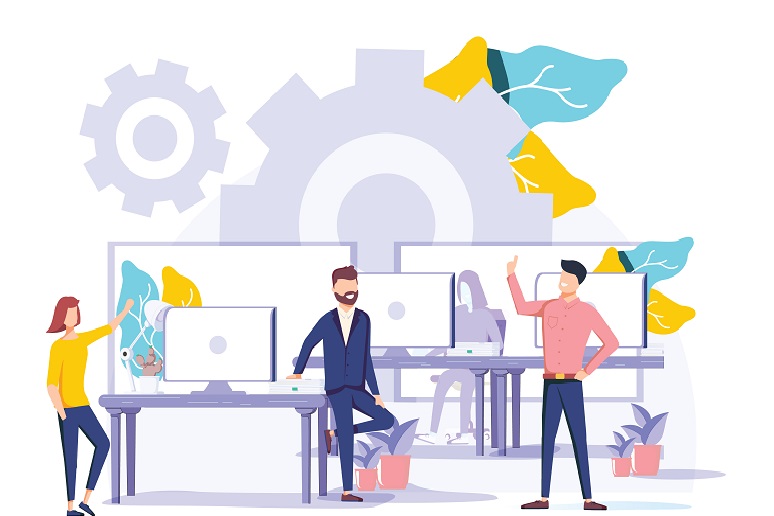Have you ever considered the workplace as a leadership tool? If not, perhaps you should… a top priority right behind creating a safe environment.
Such is the advice of Bob Fox, chairman and principal at
FOX Architects and founder of
Work Design Magazine, as shared during the recent “Beyond 2020: Designing for the Future of Work” webinar hosted by
PLASTARC, a social research, workplace innovation, and real estate strategy firm. Here’s the thing, Fox said: With most everybody working remotely, the ability to iterate on ideas and innovate is one of the biggest challenges for businesses today, yet it remains so vital to economic development globally. Once assured of a safe working environment, people want to get back in the office, so they can interact, share ideas, and learn from each other, he added.
That’s why he considers the workplace “almost as a leadership tool,” Fox said. “In order for leaders to really effectively guide their organizations, they’ve got to have that environment where people are all on the same page, sharing ideas, and working together.”
Workplace as a leadership tool is one of a handful of interesting forward-looking concepts that bubbled up during the webinar, as participants shared how they envision the future of work. Here’s a sampling of additional talking points:
- Activity-Based Working: A Renewal — A hybrid week of in-office and remote work is, undoubtedly, the inevitable future for many people. That reality will accelerate the trend toward creating activity-based workplaces, said Nick LiVigne, head of product at Convene, a meeting, event, and office space provider. “Activity-based workplace as a [workplace] design foundation … going forward becomes table stakes” — even among organizations that have previously resisted the idea, he said. Seeing zero utilization of a workplace has forced organizations to rethink their fixed-desk approaches, and many are finding that the activity-based workplace, which allows people to select the workspace that’s best suitable to the task at hand, is most sensical, he added.
- Office as Destination — Sometimes, doing your best work means working outside the office, as we’ve seen during this pandemic — and that’s OK… in fact, iy should be encouraged, said Ale Albarran, director of design and innovation at Room, maker of office phone booths and meeting pods. But it does mean that the corporate workplace is going to face increasing competition from other types of spaces, and so workspace designers should see the pandemic as a catalyst for change, she said. “We need to provide magnetic spaces that people actually want to come into … we need to make [the office] a destination” — a place people are drawn to “collect, collaborate, commune, create,” she elaborated. “We need to bring in human warmth. We need to activate human potential.”
- Immersive Hybrid Work Environments — As workspaces evolve post-pandemic, expect to see the video meeting experiences of today pave the way for more immersive environments via the use of larger screens, bigger speakers, better microphones, and more control over lighting and other room environmentals, Fox said. LiVigne agreed, adding that “hybrid participation is going to be at the very center of the design process” so that people participating in person and remotely can engage equally. “Maybe there are other layers on top of this that we just haven’t even thought of yet, but it’s very clear that this hybrid work environment is going to be the next phase of what all of us have imagined for a very long time about truly immersive physical and digital experiences.” The experiential designs found in the exhibit world should be inspirational here, Fox added. “If you look at the user experience design world of today, and then take that into a world that becomes three dimensional, I think that’s where we’re ultimately going to be heading,” he said, pointing out work that Microsoft and others are doing spatially and with avatars as worth watching. “Those things are going to continue to grow and evolve, and they’ll become fully integrated into the workplace.”
As painful as the pandemic has been, it has given rise to thought-provoking conversations around the workplace, and that’s exciting, LiVigne said. Clearly, the workplace is here to stay, he added. “The power of place has been confirmed through all of this. We were OK, in a remote sense, and we’ve realized we can do that a lot more. But we know that we need to get back to an office environment in some form.” That’ll look different, he concluded, “but it won’t be unrecognizable.”






